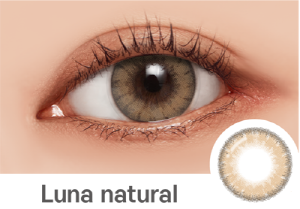One significant disservice of PMMA lenses is that they permit no oxygen to break through to the conjunctiva and cornea, causing various unfriendly and possibly serious clinical impacts. Toward the finish of the 1970s and through the 1980s and 1990s, a scope of oxygen-penetrable yet inflexible materials was created to defeat this issue. Scientist Norman Gaylord assumed a conspicuous part in the improvement of these new oxygen-porous brown contacts lenses. All in all, these polymers are alluded to as unbending gas porous or RGP materials or lenses. However all the above contact focal point types — scleral, PMMAs, and RGPs — could be accurately alluded to as “inflexible” or “hard”, the last option term is presently utilized for the first PMMAs, which are still periodically fitted and worn, though “unbending” is a conventional term for every one of these focal point types; subsequently, hard lenses (PMMAs) are a subset of unbending contact lenses. Periodically, the expression “gas porous” is utilized to portray RGPs, which is fairly deceptive as delicate contact lenses are additionally gas penetrable in that they permit oxygen to break through to the visual surface.
Delicate Lenses

The chief leap forward in delicate lenses was made by Czech physicists Otto Wichterle and Drahoslav Lím, who distributed their work “Hydrophilic gels for organic use” in the diary Nature in 1959.] In 1965, National Patent Development Corporation (NPDC) purchased the American freedoms to deliver the lenses and afterward sublicensed the privileges to Bausch and Lomb, which began to make them in the United States. The Czech scientists’ work provoked the farewell of the first fragile (hydrogel) contact lenses in specific countries during the 1960s and the essential support of the Soflens material in 1971. These delicate lenses were before long recommended more frequently than unbending ones, because of the prompt and a lot more prominent solace (inflexible lenses require a time of transformation before full solace is accomplished). Polymers from which delicate lenses are made better over the course of the following 25 years, essentially with regards to expanding oxygen porousness, by changing the fixings. In 1972, British optometrist Rishi Agarwal was quick to recommend dispensable delicate contact lenses.
Silicone hydrogel lenses
- In 1998, the main silicone hydrogel contact lenses were delivered by Ciba Vision in Mexico. These new materials typified the advantages of silicone which has very high oxygen penetrability — with the solace and clinical execution of the traditional hydrogels that had been utilized for the past 30 years. These contact lenses were at first supported basically for expanded (short-term) wear, albeit all the more as of late, day-to-day (no short-term) wear silicone hydrogels have been sent off.
- In a somewhat changed particle, a polar gathering is added without changing the construction of the silicone hydrogel. This is alluded to as the Tanaka monomer since it was imagined and licensed by Kyoichi Tanaka of Menicon Co. of Japan in 1979. Second-age silicone hydrogels, for example, galyfilcon A (Acuvue Advance, Vistakon) and senofilcon A (Acuvue Oasys, Vistakon), utilize the Tanaka monomer.
- Vistakon further developed the Tanaka monomer and added different atoms, which act as an inward wetting specialist. Comicon A (Biofinity, CooperVision) was the principal third-age polymer. Its patent cases that the material purposes two siloxy macromers of assorted sizes that, when utilized in the blend, produce extremely high oxygen porousness (for given water content). Enfilcon A (Avaira, CooperVision) is another third-age material that is normally wettable; its water content is 46%.
Corneal and unbending lenses
In 1949, the first “corneal” lenses were created. These were a lot more modest than the first scleral lenses, as they sat exclusively on the cornea as opposed to across the noticeable visual surface, and could be all ragged as long as 16 hours per day. PMMA corneal lenses turned into the principal contact lenses to have mass allure through the 1960s, as focal point plans turned out to be more refined with further developing assembling innovation. On October 18, 1964, in a TV studio in Washington, D.C., Lyndon Baines Johnson transformed into the essential President all throughout the whole presence of the United States to appear without really trying to hide wearing contact lenses, under the oversight of Dr. Alan Isen, who encouraged the head fiscally plausible sensitive contact lenses in the United States. Early corneal lenses of the 1950s and 1960s were somewhat costly and delicate, bringing about the improvement of a business opportunity for contact focal point protection. Substitution Lens Insurance, Inc. (presently known as RLI Corp.) deliberately transitioned away from its unique leader item in 1994 after contact lenses turned out to be more reasonable and simpler to supplant.

